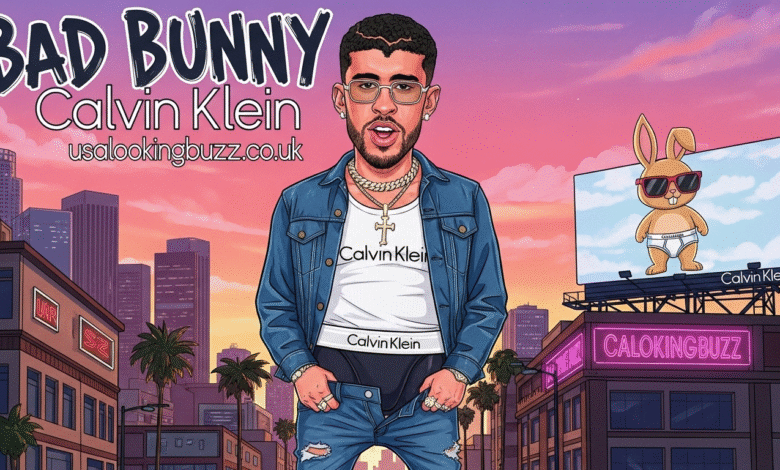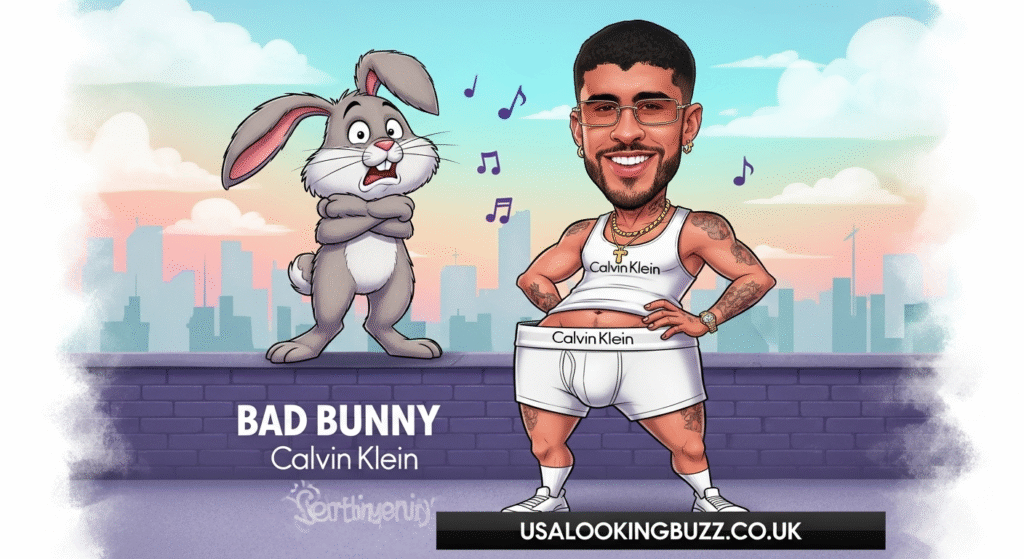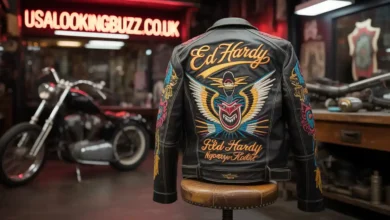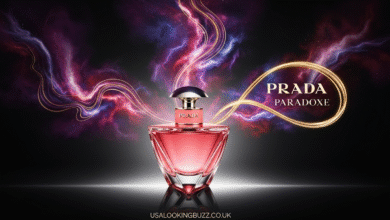Bad Bunny Calvin Klein: Iconic Collaboration with

Bad Bunny Calvin Klein
Introduction to Bad Bunny and Calvin Klein
Bad Bunny, born Benito Antonio Martinez Ocasio, is a Puerto Rican reggaeton and Latin trap singer who has made significant strides in the music industry since his debut. His unique style encompasses a blend of varied musical genres, including trap, reggaeton, and rock, showcasing his versatility as an artist. In a remarkably short span, Bad Bunny has not only topped music charts but has also become a cultural phenomenon, resonating with a diverse audience and breaking language barriers.
Through his music, Bad Bunny addresses issues such as mental health, gender norms, and social justice, which has contributed to his status as an influential figure in contemporary culture. His distinctive sense of fashion often complements his music, characterized by bold choices, gender-fluid outfits, and frequent collaborations with renowned brands. It is this intersection of music and fashion that laid the groundwork for his collaboration with Bad bunny Calvin Klein, an iconic American fashion brand recognized for its innovative design and modern aesthetic.
Calvin Klein, established in 1968, has a storied history in the fashion industry, particularly known for its minimalistic and provocative advertisements. The brand has consistently resonated with younger generations, often partnering with celebrities who embody its ethos of modernity and rebellion. In recent years, the importance of celebrity endorsements in fashion has significantly increased, as these influencers possess the power to shape consumer preferences and elevate brand visibility. Consequently, Bad Bunny’s collaboration with Calvin Klein not only highlights his influence in the music realm but also symbolizes a strategic alignment of fashion and celebrity culture, aimed at reaching and resonating with a broader audience.
The Launch of Bad Bunny Calvin Klein Campaign
The collaboration between Bad Bunny and Calvin Klein marked a significant moment in both the fashion and music industries. Launched in 2022, this campaign was designed to align with the cultural shift towards inclusivity and self-expression, echoing the values that both Bad Bunny and Calvin Klein represent. The strategic timing of the launch coincided with Bad Bunny’s rising global influence, making it an opportune moment for Calvin Klein to connect with a demographic increasingly attracted to authentic and relatable figures.
The campaign was unveiled through a multi-platform marketing strategy that encompassed social media, television, and print. By leveraging Bad Bunny’s massive social media following, Calvin Klein aimed to reach a younger, more diverse audience that resonated with the artist’s message of breaking boundaries and challenging traditional norms. The campaign’s visuals, featuring Bad Bunny in various signature styles that blend streetwear with luxury, were strategically released during high visibility events to capture maximum attention.
Featuring a range of products from underwear to loungewear, the campaign illustrated Bad Bunny Calvin Klein’s dedication to comfort and style, while simultaneously showcasing Bad Bunny’s distinctive flair. The choice of products reflected the artist’s personal style and emphasized comfort—a value resonant with contemporary consumers. The collaboration sought to not only expand Calvin Klein’s reach among younger audiences but also to celebrate the impact of Bad Bunny on modern music and fashion trends.
This partnership has since served as a blueprint for other brands looking to engage with influential figures in the entertainment industry. The fusion of Bad Bunny and Calvin Klein exemplifies the power of collaborative marketing, where both entities amplify each other’s strengths, setting a precedent for future projects.
Creative Process Behind the Campaign
The collaboration between Bad Bunny and Calvin Klein represents a profound intersection of fashion, music, and cultural identity. This partnership began with a shared vision to create visuals that resonate with contemporary audiences, leveraging the unique persona of Bad Bunny and the iconic legacy of Calvin Klein. The creative process was fueled by extensive brainstorming sessions involving designers, photographers, and creative directors who sought to encapsulate the essence of both the artist and the brand.
At the heart of the campaign was the desire to challenge conventional notions of masculinity and self-expression. The team aimed to craft imagery that would evoke a sense of authenticity, drawing on Bad Bunny’s personal experiences and views on identity. This approach aligned seamlessly with Calvin Klein’s long-standing tradition of pushing boundaries within the fashion industry. The creative team drew inspiration from various sources, including art, street culture, and social movements, to ensure the visuals would have a multi-dimensional appeal.
Photographers and stylists collaborated closely with Bad Bunny Calvin Klein to ensure that the final campaign imagery represented not just fashion, but a broader narrative about self-acceptance and liberation. The settings chosen for the shoots were meticulously selected, often featuring contrasting elements that signify duality and complexity in modern masculinity. Bright backgrounds, diverse poses, and innovative styling were pivotal in conveying the intended themes.
The creative synergy among the teams led to a cohesive campaign that not only showcased Bad Bunny in Calvin Klein essentials but also promoted a dialogue about identity. This collaboration became more than just a marketing initiative; it symbolized a cultural moment where fashion and music intersect to inspire others. Ultimately, the campaign serves as a testament to Bad Bunny’s influence in the fashion world and the possibilities that arise when artists collaborate with iconic brands like Calvin Klein.
Bad Bunny as a Fashion Icon
Bad Bunny, the Puerto Rican reggaeton artist, has emerged as a significant figure in the fashion world, redefining what it means to be a modern-day style icon. Bad Bunny Calvin Klein collabration has not only elevated the brand’s profile but also showcased his unique ability to blend music and fashion seamlessly. Bad Bunny’s fashion sense is characterized by bold choices that often challenge traditional gender norms. He frequently mixes streetwear with high fashion, pushing boundaries and encouraging his fans to embrace their individuality.
Signature looks often include oversized silhouettes, vibrant colors, and statement accessories that capture attention. From wearing skirts to donning edgy graphic tees, Bad Bunny demonstrates that fashion is a powerful form of self-expression. In many of his music videos and public appearances, he has showcased outfits that reflect both his personality and cultural heritage, resonating deeply with a diverse audience. This approach has not only solidified his place as a fashion figure but has also inspired discussions around masculinity in fashion.
When comparing Bad Bunny’s influence to other prominent figures in the industry, it is evident that his impact is significant. Artists such as Lil Nas X and Harry Styles have also embraced fluidity in their fashion choices, yet Bad Bunny has carved out a distinct niche that emphasizes his Latin roots and cultural influences. His collaboration with Calvin Klein also signals a shift in how high-end brands are recognizing and embracing artists from diverse backgrounds. In a realm where music and fashion often intersect, Bad Bunny stands as a testament to the evolving nature of style, where authenticity and creativity reign supreme.

Cultural Impact of the Collaboration
The collaboration between Bad Bunny Calvin Klein has emerged as a significant cultural milestone, effectively bridging the realms of music and fashion. This partnership is indicative of a broader trend where streetwear aligns with high fashion, reflecting changing consumer preferences and cultural values. Bad Bunny, as a prominent figure in the Latinx community and a global music icon, embraces authenticity and self-expression—qualities that resonate deeply with his fanbase. His collaboration with Calvin Klein thus serves not only as a commercial venture but also as a platform for representation.
This fusion of styles is not merely superficial; it embodies a movement in contemporary fashion where established brands are increasingly collaborating with artists from diverse backgrounds. Bad Bunny’s influence in the music industry has reshaped traditional narratives, allowing for more inclusive representations of Latinx culture. The visibility he brings to Calvin Klein through the lens of Latinx identity challenges stereotypes while promoting a sense of belonging and pride among fans.
Moreover, the collaboration speaks to a generational shift in consumer behavior, where fans are drawn towards brands that resonate with their values and social narratives. The Bad Bunny Calvin Klein partnership illustrates the desire for authenticity, as consumers seek out products that reflect their individuality and cultural heritage. This not only enhances Calvin Klein’s brand image but also empowers Bad Bunny’s message of acceptance and identity.
The cultural ramifications of this collaboration extend beyond fashion and music; they signify a potential redefining of mainstream media’s approach to diversity and representation. With Bad Bunny at the forefront, this partnership encourages other brands to embrace inclusivity, paving the way for more collaborations that celebrate varied cultural expressions. Thus, the partnership has established itself as a remarkable intersection of fashion and music, promoting a dialogue about identity, culture, and consumer engagement in contemporary society.
Social Media and Public Reception
The collaboration between Bad Bunny Calvin Klein has undoubtedly generated considerable buzz across various social media platforms. The visually striking campaign, featured in a series of captivating promotional materials, has engaged audiences globally, leading to a surge in interest not only in the brand but also in Bad Bunny himself. From Instagram to Twitter, fans have taken to these platforms to express their admiration, with metrics reflecting an impressive tally of likes, shares, and comments. These reactions highlight the resonance of Bad Bunny’s personal style and image with his extensive fan base.
On platforms like Instagram, the initial promotional posts garnered millions of likes within hours, showcasing the artist’s significant influence. User-generated content further amplified the campaign, as fans recreated looks inspired by Bad Bunny Calvin Klein advertisements. Comments sections were filled with excitement, and the hashtag associated with the campaign trended soon after launch, illustrating how effectively the collaboration captured the public’s imagination. Additionally, the partnership has encouraged discussions about body positivity and representation, particularly as Bad Bunny is known for defying traditional gender norms and advocating for inclusivity.
The role of influencer marketing cannot be overlooked in this context, as many social media influencers have engaged with the campaign, sharing their opinions and styled interpretations of Bad Bunny’s looks. This has contributed to a broader conversation about the integration of pop culture and fashion, enhancing the visibility of both Bad Bunny Calvin Klein. By leveraging influencer reach, the campaign has not only strengthened brand identity but also fostered a community of fans who actively participate in the narrative. Overall, the public reception exemplifies how strategic collaborations can create significant engagement and cultivate brand loyalty through cross-platform social interactions.
Fashion Trends Inspired by Bad Bunny
Bad Bunny’s collaboration with Calvin Klein has sparked a significant shift in contemporary fashion trends. The blend of urban streetwear and polished aesthetics, presented through the campaigns, has resonated deeply with fans and consumers alike. Bad Bunny’s unique sense of style, which seamlessly integrates bold prints and comfortable silhouettes, has encouraged individuals to experiment with their wardrobe choices, moving away from conventional attire to embody a more personal, expressive fashion identity.
The campaign’s emphasis on gender fluidity has also had a profound impact on how consumers view fashion. Traditional boundaries between men’s and women’s clothing have blurred, prompting a broader acceptance of varied styles across genders. As a result, many fans and consumers have started to adopt pieces that reflect Bad Bunny’s edgy sensibility, such as oversized tees, tailored shorts, and striking accessories that challenge norms. This evolution is evident in the increased popularity of unisex clothing lines and the rise of brands that promote inclusivity in their collections.
Moreover, the visuals of Bad Bunny in his Calvin Klein campaign have influenced various aspects of street style. From baggy denim to high-waisted silhouettes, many trends have emerged that mirror the bold choices made by the artist. The use of vibrant colors and patterns has encouraged followers to be more audacious in their fashion selections, creating a vibrant community of style enthusiasts who celebrate individuality. These trends underscore the powerful role that collaborations like Bad Bunny’s with Calvin Klein play in shaping modern fashion landscapes, prompting consumers to embrace creativity and self-expression in their daily attire.
In conclusion, the collaboration has not only elevated Bad Bunny’s status within the fashion industry but has also created a lasting influence on how consumers curate their style, inviting a new era of fashion that embodies freedom and diversity.
Future Potential Collaborations
Bad Bunny, a highly influential figure in contemporary music, has already made significant waves through his collaboration with Calvin Klein. This partnership not only highlighted his unique style but also aligned with Calvin Klein’s core identity, appealing to a broader audience. As we look towards the future, there are several exciting possibilities for further collaborations that could continue to shape both Bad Bunny’s trajectory in the music industry and Calvin Klein’s brand narrative.
Considering Bad Bunny’s strong presence in social media and his ability to connect with younger audiences, it is likely that any future collaboration will harness these channels to amplify consumer engagement. For instance, we might see limited-edition product launches that directly reflect the artist’s personal style or features showcasing his cultural influences. Such initiatives would not only serve to personalize the brand experience but also maintain relevance within rapidly evolving markets. The synergy between Bad Bunny’s artistic vision and Calvin Klein’s fashion innovation leaves ample room for creativity in future endeavors.
Moreover, the potential for collaborations that extend beyond fashion into lifestyle products could be explored. Bad Bunny’s foray into various aspects of entertainment and culture, including music festivals, luxury items, or even fragrances, could provide Calvin Klein with innovative platforms to reach diverse demographics. Given that both entities thrive on reinvention, we might also anticipate collaborations that challenge traditional boundaries within both industries.
As consumers continue to seek authenticity in brand partnerships, the excitement surrounding future endeavors involving Bad Bunny and Calvin Klein could play a crucial role in enhancing brand loyalty. Capitalizing on current trends while staying true to their roots will be essential for both Bad Bunny and Calvin Klein in solidifying their legacies in their respective fields.
Conclusion: The Legacy of Bad Bunny and Calvin Klein
The collaboration between Bad Bunny and Calvin Klein has emerged as a noteworthy event in both the music and fashion industries, symbolizing a converging of artistry and style. Bad Bunny, who is known for breaking musical boundaries, has also carved out a unique niche in the fashion world, establishing himself as a trendsetter with his bold choices and distinctive aesthetic. His partnership with Calvin Klein has elevated this status, blending the realms of urban culture and high fashion in ways that resonate with diverse audiences.
This collaboration is particularly significant as it not only reinforces the influence of Latinx culture in mainstream media but also challenges traditional fashion norms. Bad Bunny’s unique sense of style, combined with Calvin Klein’s timeless design philosophy, creates a synthesis that transcends mere clothing lines. This partnership has sparked conversations around inclusivity and representation in fashion, encouraging more brands to embrace diverse identities and self-expression. The campaign has highlighted how music and fashion can coexist, reinforcing one another and driving cultural narratives forward.
Moreover, the impact of Bad Bunny’s collaboration with Calvin Klein extends beyond the immediate aesthetic appeal. It serves as a catalyst for broader discussions regarding masculinity and fashion. Bad Bunny’s willingness to defy gender norms and societal expectations, paired with Calvin Klein’s iconic branding, presents a powerful message: that self-expression through fashion should know no bounds. As we reflect on this partnership, it becomes clear that the legacy of Bad Bunny and Calvin Klein will continue to inspire future generations, shaping cultural dialogues around identity, creativity, and artistry. Their collaboration is a testament to the ever-evolving relationship between music and fashion, marking a pivotal moment that may influence trends well into the future.




